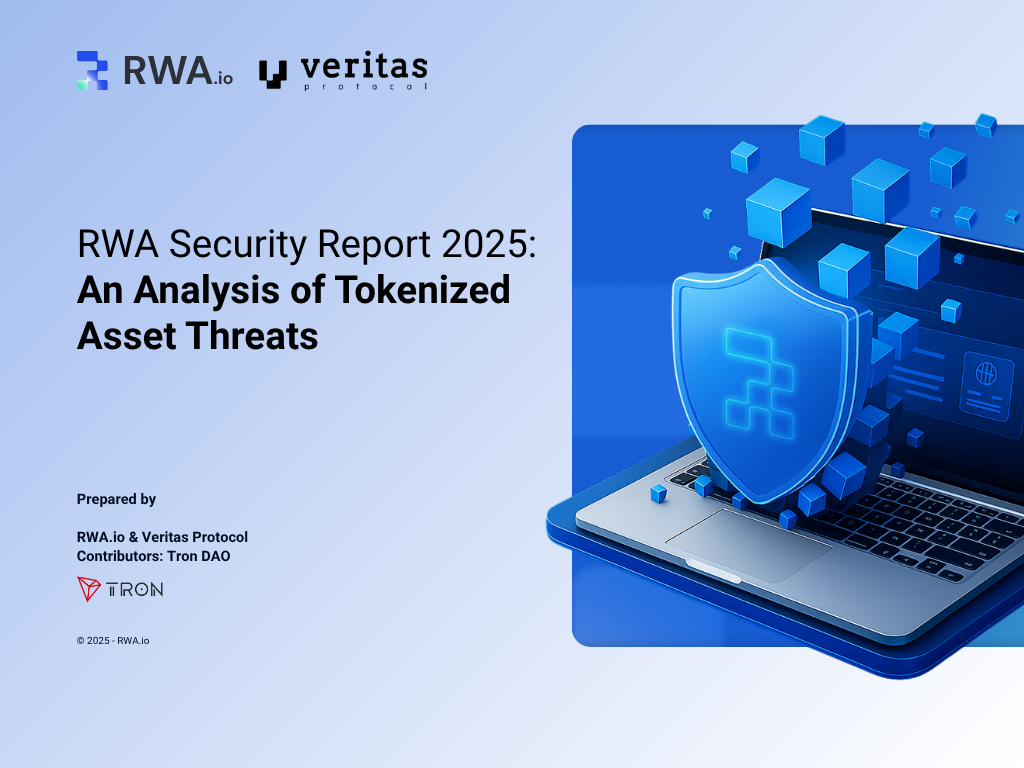[ newsletter ]
Stay ahead of Web3 threats—subscribe to our newsletter for the latest in blockchain security insights and updates.
Thank you! Your submission has been received!
Oops! Something went wrong. Please try again.
Learn about flash loan attack detection: patterns, vulnerabilities, and strategies for proactive monitoring and alerts in DeFi.





Flash loan attacks are a big deal in the decentralized finance (DeFi) world. They happen super fast and can drain a lot of money before anyone even notices. Figuring out how these attacks work and how to spot them is super important if you want to keep your crypto safe. This article is all about flash loan attack detection, looking at the sneaky ways attackers operate and what we can do to catch them.
Flash loans are a pretty neat innovation in decentralized finance (DeFi). They let you borrow a huge amount of crypto without putting up any collateral, as long as you pay it back in the same transaction. Sounds great for developers and traders, right? Well, it is, but this very feature also opens the door for some pretty nasty attacks. Think of it like borrowing a massive sum of money, using it to manipulate a market, and then paying it all back before anyone even notices. It all happens in the blink of an eye, within a single block on the blockchain.
Attackers basically use flash loans as a tool to execute complex, multi-step strategies that would otherwise be impossible or require significant capital. They look for weaknesses in how DeFi protocols handle things like price feeds, collateral management, or even governance votes. The attack usually involves a sequence of actions:
If the loan isn't repaid within the same transaction, the whole operation is reversed, so there's no risk to the attacker if they fail. This makes them incredibly appealing for malicious actors looking to make a quick buck.
The core of a flash loan attack lies in exploiting the atomic nature of blockchain transactions. Attackers leverage the ability to perform numerous operations within a single block, creating temporary market conditions or exploiting protocol logic that wouldn't be sustainable or detectable over longer periods.
These attacks aren't just a minor inconvenience; they can have serious ripple effects. For starters, they drain funds directly from vulnerable protocols, which can be millions of dollars. This loss of capital can destabilize a project and even lead to its collapse. Beyond the direct financial hit, flash loan attacks erode trust in DeFi. When users see that even seemingly secure platforms can be emptied overnight, they become hesitant to deposit their funds. This can slow down the adoption of DeFi technologies and damage the reputation of the entire ecosystem. Plus, successful attacks can sometimes be replicated on other similar platforms, creating a domino effect of vulnerabilities.
Attackers are always on the lookout for specific weak spots. Some of the most common ones include:

Keeping an eye on transactions as they happen is super important for catching flash loan attacks before they cause too much damage. Think of it like having a security guard watching every single person entering a building. You want to spot anyone acting suspiciously right away. In the world of DeFi, this means watching for unusual patterns in how tokens are moved, how much is being borrowed, and how quickly things are happening. A sudden, massive spike in borrowing activity, especially from a new or unknown address, could be a big red flag. We're talking about looking for transactions that are way outside the normal range for a particular protocol.
The speed of blockchain transactions means that detection systems need to be just as fast, if not faster. Waiting too long to notice something is wrong can mean the difference between a minor alert and a major exploit.
Before any code even gets close to handling real money, it needs to be thoroughly checked out. This is where smart contract auditing and vulnerability testing come in. It's like having a building inspector go over the blueprints and the actual construction to make sure there are no hidden weaknesses that someone could exploit. For DeFi, this means having experts look at the smart contract code line by line, searching for any potential bugs or design flaws that an attacker could use to their advantage. Automated tools can help find common issues, but human eyes are often needed for the more complex, logic-based vulnerabilities that attackers love to target.
Beyond just watching individual transactions, we can look at the bigger picture using blockchain analytics. This is like using a detective's toolkit to piece together clues across the entire network. By analyzing historical data, transaction patterns, and the relationships between different addresses and smart contracts, we can build a profile of normal activity. When something deviates significantly from this established baseline, it becomes much easier to spot potential threats. This approach helps identify not just single suspicious transactions, but entire sequences of actions that might indicate an attack in progress. It's about understanding the 'normal' so you can clearly see the 'abnormal'.

Flash loan attacks, while complex, often leave behind discernible patterns that security analysts can track. Understanding these patterns is key to developing effective detection mechanisms. Attackers typically aim to exploit specific vulnerabilities within decentralized finance (DeFi) protocols, and their methods, though varied, tend to fall into a few common categories. By analyzing transaction data, smart contract interactions, and market behavior, we can start to spot the tell-tale signs of an impending or ongoing exploit.
One of the most common ways flash loan attackers make a profit is by manipulating asset prices on decentralized exchanges (DEXs). They use the borrowed funds to create artificial price discrepancies, then exploit them for quick gains. This often involves a sequence of trades across different platforms or within the same platform to create a temporary imbalance.
Attackers often target DEXs with lower liquidity pools, as these are easier to manipulate with a significant amount of borrowed capital. The goal is to create a profitable arbitrage opportunity that can be closed within the same transaction.
For instance, an attacker might borrow a large sum, buy a token on DEX A at a low price, then use that token as collateral to borrow more funds or swap it on DEX B at a much higher price, all before the flash loan is repaid. This requires precise timing and a deep understanding of the protocols involved. The DeFi ecosystem is rife with such opportunities, making it a prime target.
Another pattern involves using flash loans to manipulate collateral within lending protocols or to influence governance decisions. In collateral swapping, an attacker might use a flash loan to temporarily replace a protocol's valuable collateral with less valuable assets, causing a liquidation cascade or draining funds.
Governance manipulation is particularly insidious. By borrowing a large amount of a project's governance tokens, an attacker can gain temporary voting power to pass malicious proposals, such as draining the treasury or changing critical protocol parameters. This highlights the importance of robust governance frameworks that can withstand such short-term power grabs.
Beyond the direct exploitation of DeFi mechanics, attackers often leave traces in how they interact with smart contracts. Analyzing the creation of new contracts and the signatures of transactions can reveal suspicious activity.
The signature of a transaction can sometimes reveal the intent behind it, especially when combined with the sequence of operations. For example, a transaction that initiates a flash loan, followed by a series of calls to different DEXs and lending protocols, and concluding with the repayment of the loan and a large profit withdrawal, is a strong indicator of an attack. Monitoring these sequences, especially those involving high-value flash loans, is a proactive step in identifying potential threats before they cause significant damage.
So, you've got your systems humming along, watching for weird stuff. But how do you actually turn those observations into useful alerts that don't just flood your team with noise? It's all about being smart with your thresholds and understanding what's really going on.
This is where you draw the line between normal day-to-day operations and something that might be a problem. You can't just set one number for everything; it needs to make sense for the specific protocol you're watching. Think about things like:
It's a balancing act. Set thresholds too low, and you'll get swamped with false positives. Set them too high, and you might miss an attack until it's too late. You'll likely need to adjust these over time as the protocol evolves and market conditions change.
An alert saying "high transaction volume detected" is okay, but it's way better if you know why that's happening. This means tying your alerts back to the specific data points within the protocol itself. For example:
The goal here is to move beyond simple anomaly detection and build a narrative around the alert. Understanding the context helps your team quickly determine if an alert represents a genuine threat or just a busy period for the protocol.
Once an alert is triggered and confirmed as a potential attack, you don't want to be scrambling to figure out what to do. Having pre-defined playbooks for automated responses can save precious time and potentially limit the damage.
These automated responses aren't a silver bullet, but they provide a crucial first line of defense, giving your human teams the breathing room they need to investigate further and implement more complex mitigation strategies.
Flash loan attacks happen super fast, often within a single block. To combat this, we can build in some safety nets directly into the smart contracts. Think of time locks as a cooldown period. For really important actions, like changing critical contract parameters or withdrawing large sums, a time lock can be implemented. This means that once an action is initiated, it can't be fully executed for a set amount of time – maybe an hour or even a day. This gives everyone a chance to review what's happening and, if something looks fishy, to react before the irreversible happens. It’s like putting a pause button on potentially dangerous moves.
Circuit breakers are another layer of defense. These are essentially automated systems that can halt all or parts of a protocol's operations if certain predefined conditions are met. For example, if the trading volume on a specific pair suddenly spikes by an abnormal percentage, or if the price of a token deviates wildly from its expected value, a circuit breaker could be triggered. This stops the attacker in their tracks, preventing further damage while the situation is assessed. It’s a bit like an emergency stop button for the whole system.
For managing critical protocol funds or executing sensitive administrative functions, relying on a single wallet is just asking for trouble. Multi-signature (multi-sig) wallets require a set number of approvals from different key holders before a transaction can be executed. For instance, a 3-of-5 multi-sig wallet means that out of five designated key holders, at least three must sign off on a transaction. This significantly raises the bar for attackers. They wouldn't just need to compromise one wallet; they'd need to compromise multiple independent wallets and collude to get the required signatures. This makes unauthorized access and malicious transactions much harder to pull off.
This approach adds a robust layer of security by distributing control. It prevents a single point of failure and makes it much more difficult for an attacker to gain unilateral control over valuable assets or critical protocol functions. It’s a way to ensure that important decisions are made collectively, not by a lone actor.
This is where things get really interesting. AI and machine learning (ML) can analyze vast amounts of on-chain data in real-time, looking for patterns that human analysts might miss. These systems can learn what 'normal' transaction behavior looks like for a specific protocol and then flag anything that deviates significantly. This includes looking at:
ML models can be trained on historical attack data to recognize the signatures of known attack vectors, and also to identify novel, previously unseen attack methods based on anomalous behavior. The goal is to move from reactive detection to proactive prediction, identifying potential threats before they cause significant damage.
While traditional security measures like audits are important, they often only catch vulnerabilities that existed at the time of the audit. The DeFi space moves so fast, and new exploits are discovered constantly. Advanced techniques like AI-powered anomaly detection can continuously monitor the live environment, adapting to new threats as they emerge and providing a much-needed dynamic defense.
Looking at real-world examples is super helpful when trying to get a handle on how these flash loan attacks actually go down and, more importantly, how projects have tried to fight back. It’s not just about the money lost, but the lessons learned.
Saddle Finance, a decentralized exchange, faced a significant exploit where attackers managed to drain millions. The core issue often boils down to how the protocol handles price oracles and liquidity pools. In Saddle's case, the attackers manipulated the price of a specific token within the protocol's pools. They used a flash loan to borrow a massive amount of a particular asset, which allowed them to significantly influence its price within Saddle's system. Once the price was skewed, they could then swap out other assets at an artificially favorable rate, pocketing the difference before repaying the flash loan. This kind of attack really highlights the need for robust price oracles that are resistant to manipulation, especially when dealing with volatile assets. It’s a stark reminder that even well-designed protocols can have blind spots.
Beanstalk Farms experienced a major loss due to a flash loan attack that exploited its governance system. The attackers didn't just manipulate prices; they used the flash loan to acquire a huge amount of the protocol's governance token, Beanstalk (BEAN). This gave them enough voting power to pass a malicious governance proposal. This proposal essentially allowed them to drain the protocol's funds. The attack vector here was less about smart contract bugs and more about the mechanics of decentralized governance itself. It showed how quickly a large flash loan could be used to hijack control of a protocol. Key indicators leading up to such an event might include:
The speed at which governance can be captured using flash loans is alarming. It means that even if a protocol's smart contracts are technically sound, its decision-making process can become the weakest link. This necessitates careful consideration of governance token distribution and voting mechanisms.
Inverse Finance suffered a substantial loss, and analyzing the incident reveals several warning signs that could have been spotted earlier. The attack involved a flash loan used to manipulate the price of the protocol's native stablecoin, INV, and its collateral assets. Attackers exploited a vulnerability related to how the protocol calculated asset prices and collateral values. They essentially created a situation where they could borrow assets against seemingly high collateral values, drain those assets, and then repay the loan, leaving the protocol with devalued collateral. Some early indicators that might have signaled trouble for Inverse Finance include:
These case studies collectively underscore that flash loan attacks are diverse, targeting everything from price oracles and liquidity pools to governance systems and collateral valuation logic. Mitigation requires a multi-layered approach, focusing on secure smart contract design, reliable price feeds, robust governance frameworks, and vigilant real-time monitoring.
The decentralized finance (DeFi) space is growing super fast, and honestly, keeping up with security is a real headache. It's not just about finding bugs once; it's this constant game of whack-a-mole. New protocols pop up daily, and they're all connected, meaning one weak spot can cause a domino effect. We're seeing more complex attacks that blend different methods, like phishing with smart contract flaws, making them harder to spot. Plus, the speed of development means security sometimes takes a backseat, leading to rushed audits or code that hasn't been fully tested. It's a tough spot to be in when you want to innovate but also keep everyone's money safe.
When an attack happens in DeFi, things move at lightning speed. We're talking about millions of dollars potentially vanishing in minutes. This means having a plan for what to do after an exploit is absolutely critical. It's not enough to just detect a problem; you need to be able to react almost instantly. This involves having clear steps for pausing operations, communicating with users, and trying to recover funds if possible. Waiting around or fumbling through a response plan just gives attackers more time to do damage. The faster you can act, the better your chances of limiting the losses.
It's a tricky balance, right? On one hand, DeFi is all about pushing boundaries and creating new financial tools. That drive for innovation is what makes it exciting. But on the other hand, this rapid growth often outpaces the development of solid security practices. We see new attack vectors popping up all the time, and sometimes the security measures just aren't mature enough to handle them. It feels like we're always playing catch-up. The goal is to build a system that's both groundbreaking and secure, but achieving that means security needs to be baked in from the start, not just an afterthought. It's about making sure that as the technology evolves, our defenses evolve right along with it.
So, we've looked at how flash loan attacks happen and some of the patterns that pop up. It's clear that keeping an eye on these things is super important if you're involved in DeFi. While spotting these attacks is one thing, actually stopping them before they cause damage is the real challenge. The tech is always changing, and so are the ways attackers try to get in. This means we all need to stay sharp, keep learning about new threats, and build better ways to detect and prevent these kinds of exploits. It's a constant race, but by understanding the patterns and setting up smart alerts, we can make the DeFi space a much safer place for everyone.
Imagine borrowing a huge amount of money instantly without needing any collateral, like a magic loan! A flash loan attack uses this magic loan. Attackers borrow tons of digital money, then quickly use it to mess with prices on a crypto platform or find a hidden weakness in its code. They do all this super fast, usually within the same minute, before paying the loan back. If they succeed, they make a big profit. If they fail, the loan just disappears, and no one loses money except maybe the platform they attacked.
Attackers use these instant loans in a few tricky ways. Sometimes, they borrow a lot of a certain digital coin, make its price look super high on one exchange by buying a lot of it, and then sell it for a profit on another exchange where the price is still normal. Other times, they might use the borrowed money to trick a lending platform into thinking they have enough collateral, allowing them to borrow even more valuable assets. It's all about exploiting tiny differences or weaknesses before anyone notices.
Not at all! Flash loans are actually a cool tool in the world of digital money. They let people borrow money for super short periods without needing to put up any collateral, as long as they pay it back in the same transaction. This is useful for things like quickly moving money between different parts of the digital finance world. The problem isn't the loan itself, but when bad actors use this powerful tool for harmful attacks.
Stopping these attacks is tough because they happen so fast! But, developers are working on it. They can make their digital money systems (called smart contracts) super strong by checking them for mistakes very carefully. They also watch for weird activity, like sudden huge price changes or strange borrowing patterns. Sometimes, they can even put in 'stop buttons' that pause things if something looks fishy, giving them time to react.
When a platform gets hit by a flash loan attack, it can be pretty bad. The most obvious result is that the platform loses a lot of money. This can make people lose trust in the platform, and they might stop using it. It can also make the whole digital finance world seem riskier, which isn't good for anyone trying to build new and cool things with digital money.
Technically, anyone can borrow a flash loan if they know how. But actually pulling off a successful flash loan attack requires a lot of skill. You need to understand how these digital finance platforms work, find a specific weakness, and write code to exploit it perfectly within a tiny time window. So, while the loans are available, successfully attacking with them is something only a few people can do.


